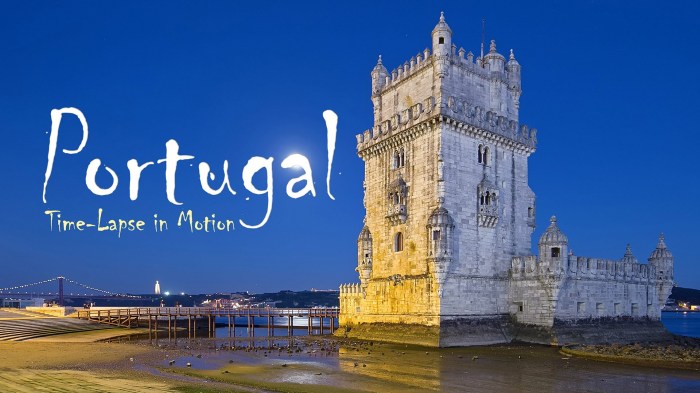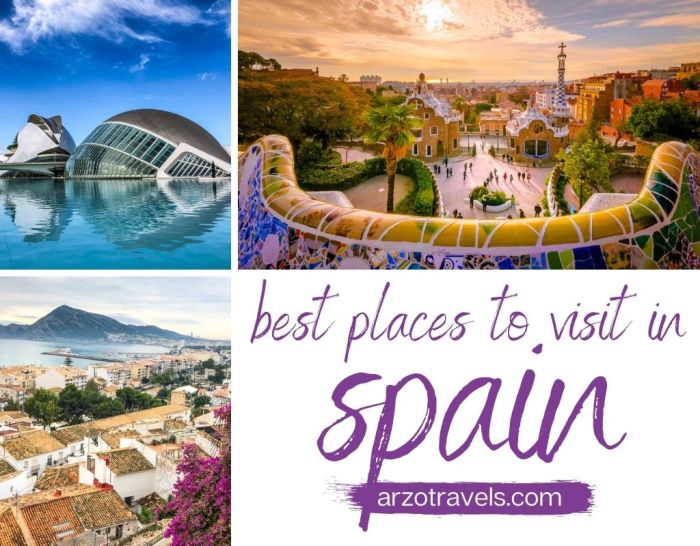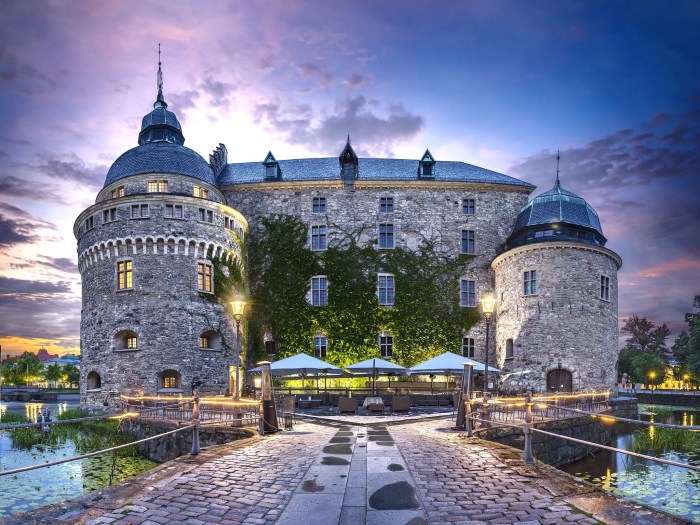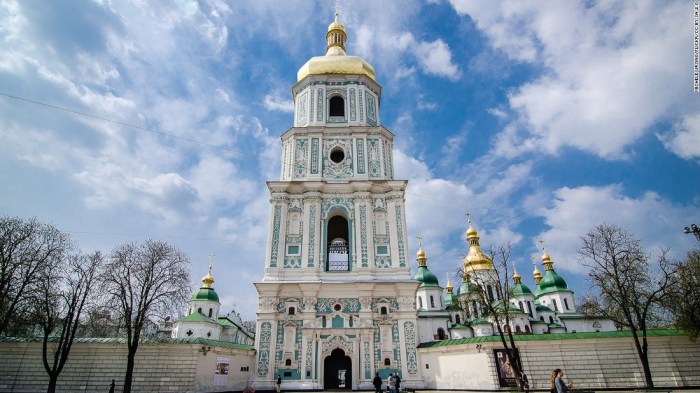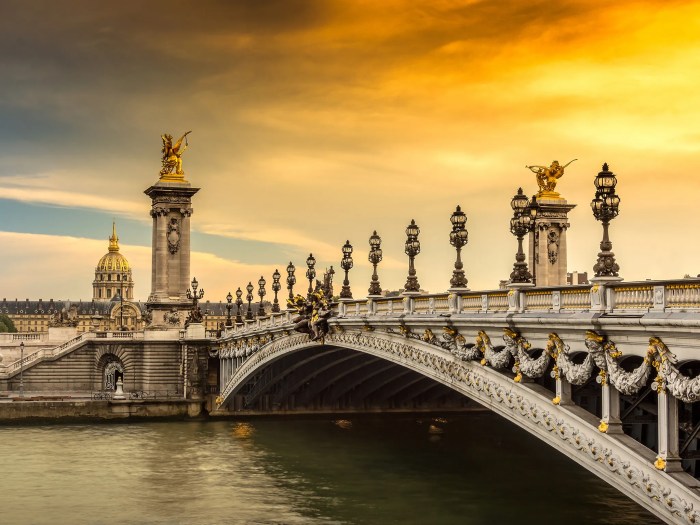Top 10 Capital Cities To Visit In Europe
Top 10 Capital Cities To Visit In Europe: Imagine cobblestone streets, ancient history, and vibrant cultures all rolled into one. Europe’s capitals are like a delicious buffet for the senses, each offering a unique flavor of history, art, and adventure.
From the iconic landmarks of London to the romantic charm of Paris, these cities promise an unforgettable journey.
Whether you’re a history buff, a foodie, or an art enthusiast, there’s a European capital city waiting to be explored. Each city has its own unique character, from the bustling streets of Berlin to the serene canals of Amsterdam.
Get ready to immerse yourself in the rich tapestry of European culture, where every corner holds a new story waiting to be discovered.
Top 10 Capital Cities to Visit in Europe
Europe is a continent brimming with history, culture, and captivating cities. Among these, the capital cities stand out as beacons of architectural marvels, vibrant art scenes, and a kaleidoscope of experiences. They are the heart and soul of their respective nations, offering a unique glimpse into the country’s character and heritage.
So, pack your bags, grab your camera, and get ready to embark on a journey through Europe’s most enchanting capital cities.
Reasons Why European Capital Cities Are Popular Travel Destinations
European capital cities offer a unique blend of history, culture, and modern life that makes them irresistible destinations.
- Rich History and Culture:These cities are steeped in history, with centuries-old buildings, monuments, and museums that tell stories of empires, revolutions, and artistic movements. The grandeur of the past is palpable in every cobblestone street and grand square.
- Architectural Wonders:From the gothic spires of Paris to the baroque palaces of Vienna, European capital cities boast architectural masterpieces that leave visitors in awe. Each city has its own distinct architectural style, reflecting its unique history and influences.
- Vibrant Art Scenes:World-renowned museums, art galleries, and street art murals showcase the artistic brilliance of Europe. From the Louvre in Paris to the Uffizi Gallery in Florence, these cities offer a feast for the eyes and the soul.
- Delicious Cuisine:European capital cities are culinary havens, offering a diverse range of flavors and traditions. Whether it’s the fresh seafood of Lisbon or the hearty stews of Budapest, there’s something to tantalize every palate.
- Thriving Nightlife:From cozy pubs to lively clubs, European capital cities offer a vibrant nightlife scene that caters to every taste. Whether you’re looking for live music, dancing, or simply a relaxing drink, you’ll find plenty of options to keep you entertained.
So, you’re planning a European adventure and want to hit up the big cities? Totally get it, Paris, Rome, London – they’re all iconic for a reason. But if you’re looking for a little something different, maybe some stunning beaches and volcanic landscapes, check out the Top 10 Places To Visit in Milos.
It’s a Greek island with some seriously unique vibes, and then you can hop back to the continent and explore those bustling capital cities!
- Convenient Transportation:Most European capital cities have well-developed public transportation systems, making it easy to get around and explore different neighborhoods. This allows visitors to experience the city at their own pace and without the hassle of driving.
- Cosmopolitan Atmosphere:European capital cities are melting pots of cultures and nationalities, creating a vibrant and cosmopolitan atmosphere. You’ll encounter people from all walks of life, making your trip an enriching and unforgettable experience.
London, United Kingdom
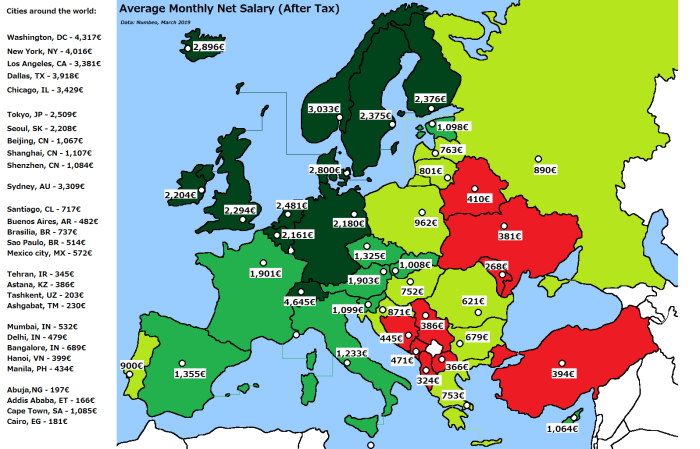
London, the capital of the United Kingdom, is a global city known for its rich history, vibrant culture, and iconic landmarks. With a population of over 9 million people, London is a melting pot of diverse cultures and a hub for international business, finance, and tourism.
Iconic Landmarks and Attractions, Top 10 Capital Cities To Visit In Europe
London is home to some of the world’s most recognizable landmarks.
- The Tower of London: This historic castle, built in the 11th century, served as a royal palace, a prison, and an armory. Today, it is a popular tourist destination and home to the Crown Jewels.
- Buckingham Palace: The official residence of the British monarch, Buckingham Palace is a grand and impressive building that hosts state events and ceremonies.
- The Houses of Parliament: Located on the banks of the River Thames, the Houses of Parliament are home to the UK’s legislature and feature the iconic Big Ben clock tower.
- The London Eye: This giant Ferris wheel offers stunning panoramic views of the city from its 135-meter height.
- The British Museum: One of the world’s most renowned museums, the British Museum houses a vast collection of artifacts from around the world.
- The National Gallery: This art museum features a collection of European paintings from the 13th to 19th centuries, including masterpieces by Leonardo da Vinci, Michelangelo, and Van Gogh.
Rich History and Cultural Significance
London has a long and fascinating history dating back to Roman times. The city played a pivotal role in the development of the British Empire and has been a center of trade, commerce, and culture for centuries.
- Roman London: The Romans founded Londinium in 43 AD, and the city grew into a major commercial center. Remains of Roman walls and other structures can still be seen in London today.
- The Medieval Period: During the Middle Ages, London was the capital of the Kingdom of England and witnessed the construction of iconic landmarks such as Westminster Abbey and the Tower of London.
- The Renaissance: The Renaissance brought a wave of cultural and artistic innovation to London, and the city became a center for printing, theater, and music.
- The Industrial Revolution: London was at the heart of the Industrial Revolution, and its population and economy grew rapidly during the 19th century. The city also became a major center for manufacturing and trade.
- The 20th Century: The 20th century saw London endure two world wars and experience significant social and economic change. The city emerged as a global financial center and a hub for international business.
Vibrant Arts and Entertainment Scene
London is a world-class destination for arts and entertainment.
- Theater: London’s West End is famous for its world-class theaters, which host a wide variety of musicals, plays, and other performances.
- Music: London has a vibrant music scene, with venues ranging from intimate clubs to large arenas hosting concerts by international artists.
- Art: London is home to numerous art galleries and museums, including the Tate Modern, the National Portrait Gallery, and the Victoria and Albert Museum.
- Film: London is a major center for film production and has been the setting for numerous famous movies.
- Food: London’s culinary scene is diverse and exciting, with restaurants offering cuisines from around the world.
Paris, France
Paris, the City of Lights, is a captivating blend of romance, history, and culture, making it an irresistible destination for travelers from around the world. With its iconic landmarks, charming streets, and vibrant atmosphere, Paris offers a unique and unforgettable experience.
Architectural Beauty and Romantic Charm
Paris is renowned for its architectural beauty, a testament to its rich history and artistic heritage. The city is home to some of the world’s most iconic landmarks, including the Eiffel Tower, the Louvre Museum, and the Arc de Triomphe.
“Paris is a city that seduces you with its beauty and captivates you with its charm.”
Unknown
The Eiffel Tower, a symbol of Paris, stands as a testament to engineering prowess and architectural ingenuity. Its intricate latticework and towering height offer breathtaking views of the city. The Louvre Museum, housed in a former royal palace, is a treasure trove of art and history, home to masterpieces such as the Mona Lisa.
The Arc de Triomphe, a monumental archway, commemorates French military victories and offers panoramic views of the Champs-Élysées.
Fashion, Cuisine, and Art
Paris is a global fashion capital, renowned for its elegant style and innovative designs. From haute couture to street fashion, Paris sets trends that influence fashion houses and individuals worldwide.
“Fashion is not something that exists in dresses only. Fashion is in the sky, in the street, fashion has to do with ideas, the way we live, what is happening.”
Coco Chanel
The city’s culinary scene is equally celebrated, with renowned chefs and Michelin-starred restaurants. French cuisine is known for its exquisite flavors, elegant presentations, and emphasis on fresh, seasonal ingredients. Paris is also a major center for art, with a rich history of artistic expression.
The city is home to world-class museums, including the Musée d’Orsay, which houses Impressionist and Post-Impressionist masterpieces, and the Centre Pompidou, a modern art museum.
Museums and Historical Sites
Paris boasts a wealth of museums and historical sites that offer a glimpse into the city’s past and present. The Louvre Museum, with its vast collection of art from ancient civilizations to modern times, is a must-visit for art enthusiasts.
The Musée d’Orsay, housed in a former railway station, showcases Impressionist and Post-Impressionist art, including works by Monet, Renoir, and Degas. The Centre Pompidou, a modern art museum with a distinctive architectural design, features contemporary art and exhibitions. Paris is also home to several historic churches, including Notre-Dame Cathedral, a masterpiece of Gothic architecture, and the Sacré-Coeur Basilica, a white-domed church perched atop the hill of Montmartre.
The Palace of Versailles, a grand royal palace located just outside Paris, offers a glimpse into the opulent lives of French monarchs.
Rome, Italy
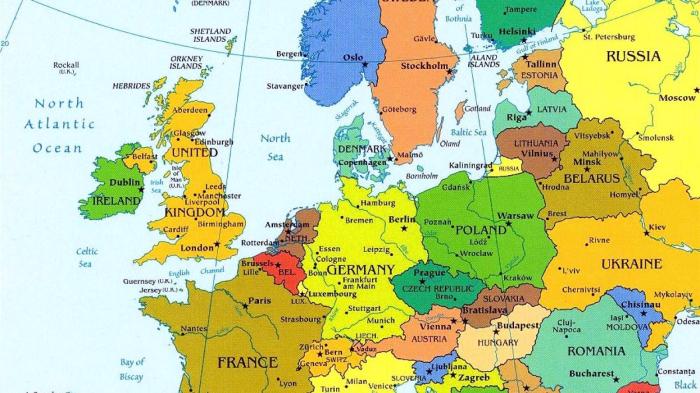
Rome, the Eternal City, is a captivating blend of ancient history, vibrant culture, and breathtaking beauty. As the capital of Italy, Rome offers an unforgettable experience for travelers seeking to immerse themselves in the heart of Western civilization.
Ancient Ruins and Historical Treasures
Rome’s historical significance is undeniable, evident in its numerous ancient ruins and historical treasures. These remnants of a bygone era offer a glimpse into the grandeur of the Roman Empire and its enduring legacy.
- The Colosseum, a colossal amphitheater built in the 1st century AD, is a testament to the Romans’ architectural prowess and their love for gladiatorial combat. This iconic structure, once capable of accommodating over 50,000 spectators, now stands as a poignant reminder of the empire’s power and influence.
- The Roman Forum, a sprawling complex of temples, basilicas, and government buildings, was once the heart of the Roman Republic and later the Roman Empire. This historic site offers a glimpse into the daily life of ancient Romans, from their religious practices to their political affairs.
- The Pantheon, a marvel of Roman architecture, was originally built as a temple dedicated to all the gods. Its iconic dome, the largest unreinforced concrete dome in the world, is a testament to the ingenuity of Roman engineers. Today, the Pantheon serves as a church and a popular tourist destination.
Vibrant Culture and Culinary Delights
Rome is a city that pulsates with life, offering a vibrant cultural scene and a culinary experience that tantalizes the senses. The city’s artistic heritage is evident in its numerous museums, galleries, and churches, showcasing masterpieces from across the centuries.
- The Vatican Museums, home to an unparalleled collection of art and artifacts, offer a glimpse into the history and artistic legacy of the Catholic Church. Visitors can marvel at masterpieces by Michelangelo, Raphael, and other renowned artists.
- The Galleria Borghese, a museum housed in a stunning villa, showcases a collection of sculptures by Bernini and paintings by Caravaggio. This intimate setting offers a unique opportunity to appreciate these masterpieces in a serene and inspiring environment.
- The Trevi Fountain, one of Rome’s most iconic landmarks, is a masterpiece of Baroque architecture. This stunning fountain, adorned with sculptures and cascading water, is a symbol of the city’s artistic grandeur.
The Vatican City and its Impact on Rome
The Vatican City, an independent city-state located within the city of Rome, is the spiritual center of the Catholic Church and a significant influence on Rome’s cultural and historical landscape. The Vatican’s influence is evident in Rome’s numerous churches, basilicas, and religious institutions, as well as its role as a center for pilgrimage and religious tourism.
- St. Peter’s Basilica, the largest church in the world, is a masterpiece of Renaissance architecture and a symbol of the Catholic Church’s power and influence. This magnificent basilica houses the tomb of St. Peter, one of the original apostles of Jesus Christ, and is a major pilgrimage site for Catholics worldwide.
- The Vatican Gardens, a sprawling oasis of peace and tranquility, offer a welcome respite from the bustling city. These gardens, designed by renowned landscape architects, are a testament to the Vatican’s commitment to beauty and serenity.
- The Sistine Chapel, a masterpiece of Renaissance art, is adorned with frescoes by Michelangelo, including the iconic “Last Judgment.” This chapel, the site of papal conclaves, is a testament to the Vatican’s artistic legacy and its role as a center of religious and cultural life.
Berlin, Germany
Berlin, Germany, is a city that pulsates with history, art, and a unique, edgy spirit. From its tumultuous past as a divided city during the Cold War to its present-day status as a global hub for culture and creativity, Berlin has always been a city of transformation.
Its history is etched into its streets, its architecture, and its people, making it a captivating destination for anyone interested in exploring the complexities of European history and the vibrant tapestry of contemporary culture.
Historical Significance
Berlin’s historical significance is undeniable. It was the site of major events that shaped the course of European history, including the rise and fall of the Prussian Empire, the two World Wars, and the Cold War. The city’s iconic Brandenburg Gate, once a symbol of division, now stands as a monument to reunification.
The Berlin Wall, a physical embodiment of the Iron Curtain, became a symbol of oppression and division, but its fall in 1989 marked a pivotal moment in European history, signaling the end of the Cold War and the beginning of a new era of unity.
The city’s museums, memorials, and historical sites offer a glimpse into its complex past, allowing visitors to understand the forces that shaped the city and the world.
Contemporary Art Scene and Cultural Vibrancy
Berlin’s contemporary art scene is thriving. The city is home to numerous art galleries, museums, and performance spaces that showcase a wide range of artistic expressions. The East Side Gallery, a preserved section of the Berlin Wall, is a vibrant canvas for street art and graffiti, attracting artists from around the world.
The city’s underground music scene is also renowned, with numerous clubs, bars, and venues hosting diverse genres, from electronic music to indie rock. Berlin’s cultural vibrancy is further enhanced by its diverse population, with a rich tapestry of ethnicities, languages, and traditions.
The city’s multiculturalism is evident in its cuisine, its festivals, and its street life.
Diverse Neighborhoods and Unique Attractions
Berlin is a city of diverse neighborhoods, each with its own unique character and attractions.
- Mitte, the historic heart of Berlin, is home to iconic landmarks such as the Brandenburg Gate, the Reichstag Building, and Museum Island.
- Prenzlauer Bergis a trendy neighborhood known for its cafes, boutiques, and parks.
- Kreuzbergis a vibrant and alternative neighborhood with a strong artistic and counter-cultural scene.
- Friedrichshainis a lively neighborhood known for its street art, clubs, and alternative culture.
- Charlottenburgis an elegant neighborhood with grand avenues, historic buildings, and upscale shops.
Beyond its iconic landmarks, Berlin offers a plethora of unique attractions.
- The East Side Gallery, a preserved section of the Berlin Wall, is a vibrant canvas for street art and graffiti, attracting artists from around the world.
- The Berlin Wall Memorial, a moving tribute to the victims of the Berlin Wall, offers a powerful reminder of the city’s divided past.
- Tiergarten, a sprawling park in the heart of the city, provides a welcome escape from the urban bustle.
- The Berlin Zoological Garden, one of the oldest and most diverse zoos in the world, is a popular destination for families.
- The Topography of Terror, a chilling museum documenting the Nazi regime’s reign of terror, provides a sobering reminder of the horrors of the past.
Amsterdam, Netherlands
Amsterdam is a city that effortlessly blends history, culture, and modern charm. With its iconic canals, picturesque bridges, and captivating architecture, Amsterdam is a city that truly captures the heart.
Amsterdam’s Canals and Bridges
The canals of Amsterdam are a defining feature of the city. They were built in the 17th century during the Dutch Golden Age, when Amsterdam was one of the most important trading centers in the world. The canals served as a vital transportation route, connecting different parts of the city and facilitating trade.
Today, the canals are a popular tourist attraction, offering visitors a unique perspective of the city. The canals are lined with charming houses, many of which date back to the 17th and 18th centuries. These houses are often narrow and tall, with gabled roofs and colorful facades.
The canals are also home to numerous bridges, many of which are pedestrian bridges that offer stunning views of the city. Some of the most famous bridges in Amsterdam include the Magere Brug (Skinny Bridge), the Blauwbrug (Blue Bridge), and the Reguliersbrug (Regulars Bridge).
Amsterdam’s Art Scene
Amsterdam is renowned for its rich art scene, home to numerous museums, galleries, and art studios. The city is particularly known for its association with the Dutch Masters, including Rembrandt van Rijn and Vincent van Gogh. The Rijksmuseum, located in the Museumplein (Museum Square), houses a vast collection of Dutch art, including masterpieces by Rembrandt, Vermeer, and Frans Hals.
The museum’s most famous work is Rembrandt’s “The Night Watch,” a large painting that depicts a company of Amsterdam militia.The Van Gogh Museum is dedicated to the life and work of Vincent van Gogh, one of the most famous and influential artists of all time.
The museum houses a comprehensive collection of Van Gogh’s paintings, drawings, and letters, offering visitors a glimpse into the artist’s creative process and personal life.
Amsterdam’s Cultural Heritage and Tolerance
Amsterdam is a city with a rich and diverse cultural heritage. The city has a long history of tolerance and acceptance, which is reflected in its multicultural population and open-minded attitude. This tolerance is evident in Amsterdam’s relaxed approach to drug policy and its welcoming atmosphere for LGBTQ+ individuals.
Amsterdam’s cultural heritage is also evident in its numerous festivals and events, including the Amsterdam Pride Parade, the Canal Parade, and the Amsterdam Dance Event. These events celebrate the city’s diversity and inclusivity, attracting visitors from all over the world.
Madrid, Spain
Madrid, Spain, is a vibrant city bursting with energy, history, and culture. From its lively plazas and bustling markets to its world-renowned museums and architectural marvels, Madrid offers a captivating experience for every traveler.
The Vibrant Culture and Nightlife of Madrid
Madrid is a city that never sleeps. Its nightlife is renowned for its energy and diversity. From traditional tapas bars and flamenco shows to trendy clubs and live music venues, Madrid offers a plethora of options for a memorable night out.
World-Renowned Art Museums in Madrid
Madrid boasts a collection of world-class art museums that showcase the city’s rich artistic heritage. The Prado Museum, one of the world’s finest art galleries, houses an impressive collection of Spanish masters, including works by Goya, Velázquez, and El Greco.
Europe’s capital cities are pretty awesome, but if you’re looking for a different kind of adventure, maybe check out the Top 10 Places To Visit in Australia. It’s a whole other world down there! But hey, don’t forget about all the cool stuff to see in those European capitals – you can’t go wrong with a visit to any of them.
The Rich History and Architectural Heritage of Madrid
Madrid’s history is evident in its stunning architecture. The city’s grand plazas, such as the Plaza Mayor and Puerta del Sol, are testaments to its rich past. The Royal Palace of Madrid, a magnificent example of Spanish Baroque architecture, is a must-see for any visitor.
Vienna, Austria
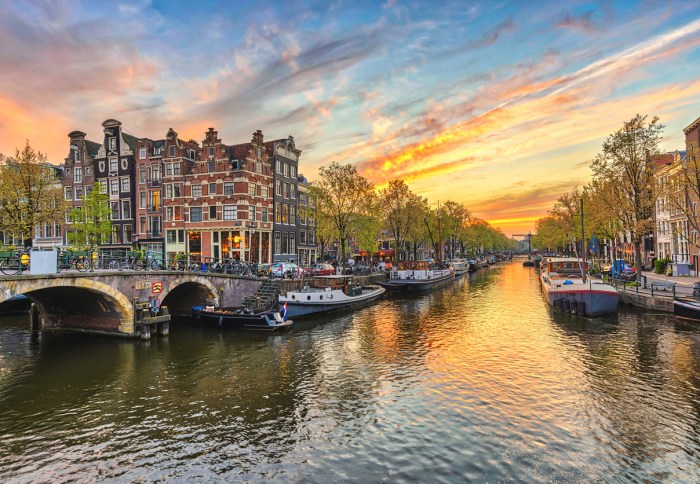
Vienna is a city steeped in history and culture, renowned for its imperial past, musical heritage, and elegant ambiance. It’s a city that seamlessly blends the grandeur of its Habsburg legacy with a vibrant contemporary spirit.
The City’s Classical Music Heritage
Vienna’s classical music heritage is unparalleled. It was the birthplace of musical giants like Mozart, Beethoven, Schubert, and Strauss, who transformed the musical landscape of Europe. The city’s musical legacy is woven into its very fabric, evident in its grand concert halls, opera houses, and museums.
The Vienna State Opera, one of the world’s most prestigious opera houses, has been a cornerstone of Vienna’s cultural life since its inauguration in 1869. The Vienna Philharmonic Orchestra, renowned for its exquisite sound and virtuosity, has a long and illustrious history, performing at the Musikverein, a concert hall considered one of the finest in the world.
The city is also home to the Vienna Philharmonic Orchestra, a world-renowned ensemble known for its exquisite sound and virtuosity.
“Vienna, a city of music, where every street corner seems to hum with the melodies of Mozart and Strauss.”
Vienna’s Imperial Palaces and Historical Landmarks
Vienna’s imperial past is vividly reflected in its magnificent palaces and historical landmarks. The Schönbrunn Palace, the summer residence of the Habsburg emperors, is a sprawling complex of gardens, fountains, and opulent rooms, showcasing the grandeur of the Habsburg dynasty.
The Hofburg Palace, the former winter residence of the Habsburgs, is another architectural masterpiece, now housing several museums and cultural institutions.
- The Belvedere Palace, known for its stunning Baroque architecture and its collection of Austrian art, is a testament to the city’s artistic heritage.
- St. Stephen’s Cathedral, a Gothic masterpiece, is a symbol of Vienna’s religious and cultural significance.
Vienna’s Coffee Culture and Culinary Scene
Vienna’s coffee culture is an integral part of the city’s charm. The city’s coffeehouses, known as “Wiener Kaffeehäuser,” have been a haven for artists, writers, and intellectuals for centuries. These traditional coffeehouses offer a unique atmosphere, where visitors can savor a cup of Viennese coffee, indulge in pastries, and enjoy the company of others.Vienna’s culinary scene is equally impressive.
Exploring Europe’s capital cities is a must for any traveler. From the iconic Eiffel Tower in Paris to the historical Colosseum in Rome, these cities offer a vibrant mix of culture, history, and modern attractions. If you’re looking for a similar experience closer to home, you might want to check out our list of Top 10 Places To Visit In The UK , which includes charming villages, breathtaking natural landscapes, and historic castles.
Whether you’re drawn to the grand architecture of European capitals or the unique charm of the UK, there’s a world of adventure waiting to be discovered.
The city’s traditional cuisine is characterized by hearty dishes, such as Wiener Schnitzel, Tafelspitz (boiled beef), and Sachertorte (chocolate cake). Vienna’s restaurants offer a diverse range of culinary experiences, from traditional Austrian fare to modern European cuisine.
Prague, Czech Republic: Top 10 Capital Cities To Visit In Europe
Prague, the enchanting capital of the Czech Republic, is a captivating blend of medieval charm and modern vibrancy. Its captivating architecture, rich history, and thriving arts scene make it a must-visit destination for any traveler.
The City’s Architectural Marvels
Prague is renowned for its stunning medieval architecture, a testament to its rich history and artistic heritage. The city’s most iconic landmark, Prague Castle, is a sprawling complex of palaces, churches, and gardens that dominates the city skyline. Visitors can wander through the castle’s courtyards, admire the Gothic spires of St.
Vitus Cathedral, and explore the Golden Lane, a charming street lined with colorful houses that once housed goldsmiths.
A Glimpse into Prague’s History
Prague’s history is deeply intertwined with its architecture. The city’s Old Town Square, a UNESCO World Heritage Site, is home to the iconic Astronomical Clock, a marvel of medieval engineering that has been captivating visitors for centuries. The square is also home to the Church of Our Lady Before Týn, a magnificent Gothic masterpiece, and the Old Town Hall, with its impressive facade and intricate clockwork.
Prague’s Vibrant Arts and Entertainment Scene
Prague’s cultural scene is as diverse as its history. The city is home to numerous theaters, concert halls, and museums, showcasing a wide range of artistic expressions. The National Theatre, a grand neo-Renaissance building, hosts opera, ballet, and drama performances, while the Municipal House, a stunning Art Nouveau masterpiece, is a popular venue for concerts and events.
Prague is also known for its vibrant nightlife, with numerous bars, clubs, and live music venues catering to a variety of tastes.
Budapest, Hungary

Budapest, Hungary, is a captivating city that seamlessly blends history, culture, and natural beauty. With its stunning architecture, world-renowned thermal baths, and vibrant nightlife, Budapest offers an unforgettable travel experience.
Architecture and Thermal Baths
Budapest is renowned for its stunning architecture, a testament to its rich history and diverse influences. The city is divided by the Danube River, with Buda on the west bank and Pest on the east. The Buda side is characterized by its hilly terrain and historic castles, including the iconic Buda Castle, a UNESCO World Heritage Site.
Pest, on the other hand, is known for its grand boulevards, bustling squares, and impressive neoclassical buildings.Budapest is also home to numerous thermal baths, a legacy of its volcanic past. These baths, known as “fürdő” in Hungarian, have been a popular attraction for centuries, offering both relaxation and therapeutic benefits.
Some of the most famous thermal baths include Széchenyi Thermal Baths, Gellért Thermal Baths, and Rudas Baths. Each bath features unique architectural styles, from Art Nouveau to Ottoman, and offers a range of services, from swimming and massages to saunas and steam rooms.
History and Culture
Budapest’s history is a tapestry woven from the threads of various empires and cultures. The city was once a Roman settlement, later ruled by Hungarians, Ottomans, and Habsburgs. These influences are reflected in Budapest’s architecture, cuisine, and language. Budapest boasts a vibrant cultural scene, with numerous museums, theaters, and concert halls.
The Hungarian State Opera House, a masterpiece of neo-Renaissance architecture, is a must-visit for opera and ballet enthusiasts. The Hungarian National Museum, housed in a magnificent building on Museum Boulevard, showcases the country’s rich history and art. The city is also home to several art galleries, including the Hungarian National Gallery, which houses a collection of Hungarian and international art.
Nightlife and Culinary Scene
Budapest is a city that comes alive at night. The city’s nightlife scene is diverse, ranging from traditional pubs and bars to trendy clubs and rooftop terraces. Ruin bars, located in renovated industrial buildings, are a unique feature of Budapest’s nightlife.
These bars offer a quirky and alternative atmosphere, with live music, art installations, and a vibrant mix of locals and tourists.Budapest’s culinary scene is a fusion of traditional Hungarian dishes and international influences. Traditional Hungarian cuisine features hearty stews, flavorful goulash, and delicious pastries.
The city is also home to a growing number of restaurants offering international cuisines, from Italian and French to Asian and Middle Eastern.
Conclusion
From bustling metropolises to charming historical cities, Europe’s capital cities offer a diverse tapestry of experiences. Each city boasts unique architecture, rich history, vibrant culture, and delicious cuisine, making them ideal destinations for any traveler. Whether you’re an art enthusiast exploring the Louvre in Paris, a history buff marveling at the Colosseum in Rome, or a foodie savoring traditional Hungarian goulash in Budapest, Europe’s capitals have something to offer everyone.
Exploring Europe’s Capital Cities
These cities provide a glimpse into the heart and soul of Europe, showcasing the continent’s rich history, cultural diversity, and modern dynamism. From the iconic landmarks to the hidden gems, each capital city offers a unique journey of discovery.
“Travel is the only thing you buy that makes you richer.”
Anonymous
Whether you’re a seasoned traveler or a first-time visitor, exploring these European capital cities will leave you with unforgettable memories and a deeper appreciation for the continent’s vibrant culture and heritage.
Wrap-Up
From the grand palaces of Vienna to the charming medieval streets of Prague, Europe’s capital cities are a testament to the continent’s rich history and vibrant culture. These cities are more than just destinations; they are gateways to a world of discovery and inspiration.
So, pack your bags, grab your camera, and get ready to experience the magic of Europe’s capital cities. You’ll be amazed by the beauty, the history, and the unforgettable experiences that await you.
Commonly Asked Questions
What is the best time of year to visit European capital cities?
The best time to visit depends on your preferences. Spring and fall offer mild weather and fewer crowds, while summer brings warm weather and festivals. Winter can be magical, but be prepared for cold temperatures and potential snow.
How much does it cost to travel to European capital cities?
Travel costs vary greatly depending on your travel style and budget. Budget travelers can find affordable flights and accommodations, while luxury travelers can indulge in upscale experiences. It’s important to plan ahead and set a budget.
Do I need a visa to visit European capital cities?
Visa requirements vary depending on your nationality. Most European countries are part of the Schengen Area, which allows visa-free travel for citizens of many countries. It’s crucial to check visa requirements before traveling.
What are some tips for planning a trip to European capital cities?
Book flights and accommodations in advance, especially during peak season. Consider purchasing a travel pass for transportation, as it can save money. Learn a few basic phrases in the local language, and be prepared to walk a lot.
Enjoy the experience!

